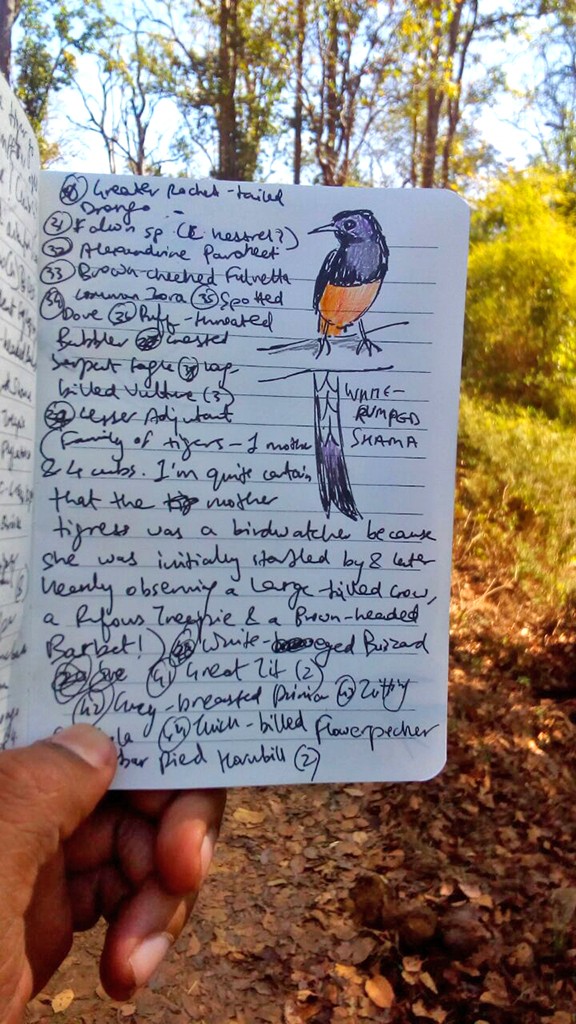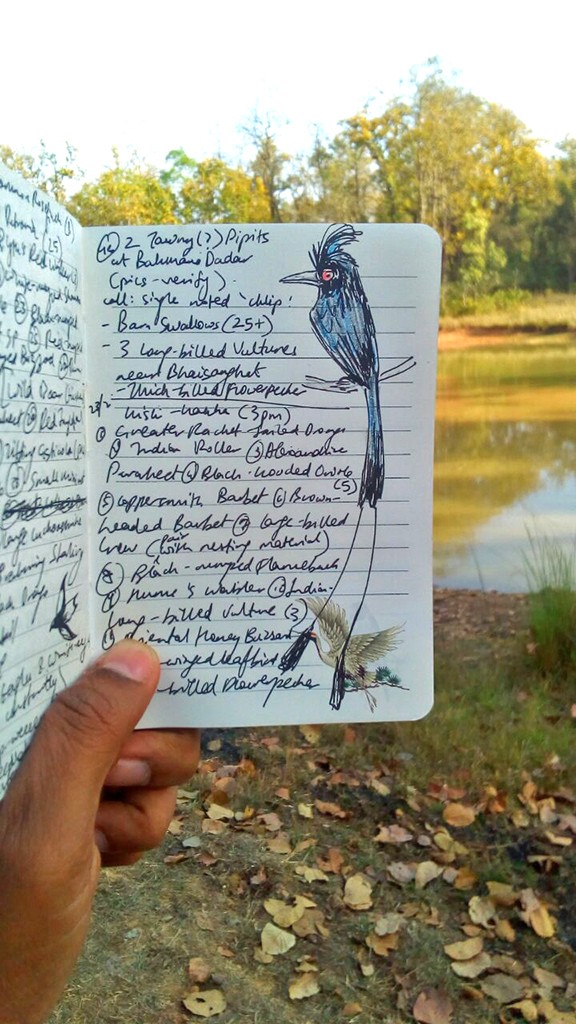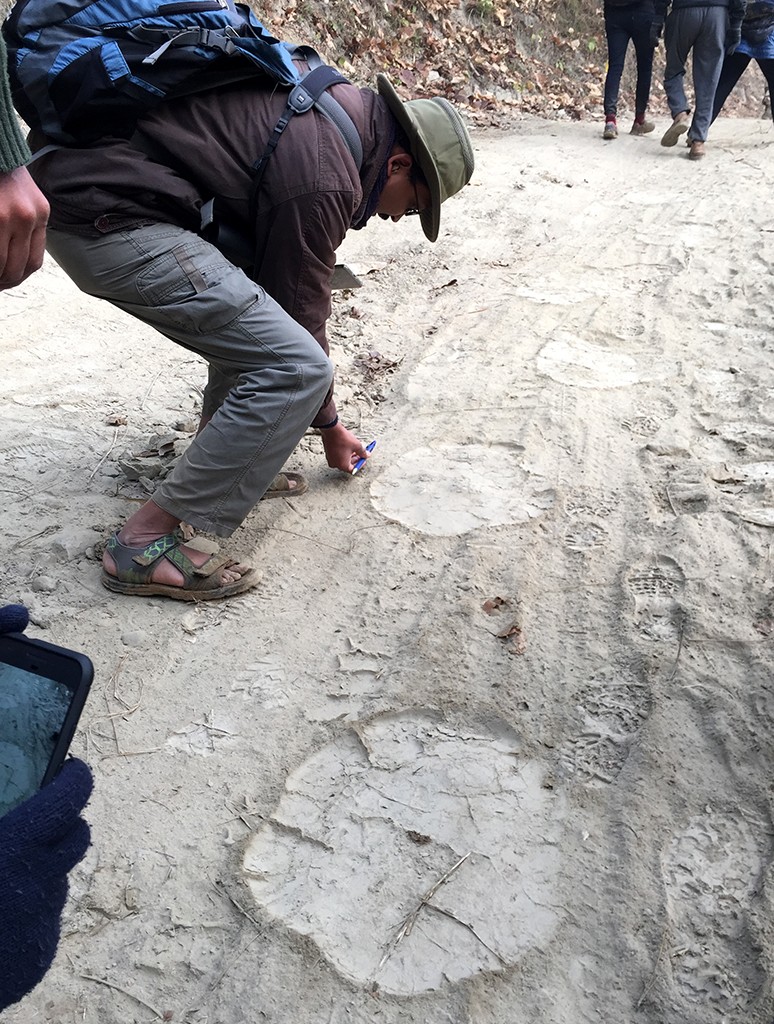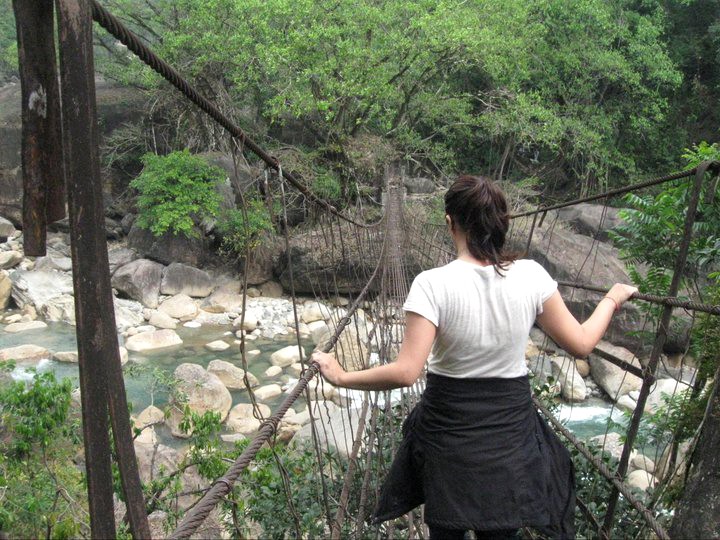 |
![]()
*This image is copyright of its original author Jobs That Allow You To Work With Nature
How to make the outdoors your office
--- by Team NiF
Career paths that veer off the beaten track. Photograph: Rohan Chakravarty
![]()
*This image is copyright of its original author
Artist/Cartoonist
Rohan Chakravarty, Wildlife Cartoonist, Green Humour
The job: I convert information about biology and conservation issues into funny snippets in the form of comics, or present an animal or a place as a delightfully exaggerated caricature. Like scientists chase wild animals to gather droppings, I chase them to gather inspiration (and sometimes droppings too).
Sustainability: It depends on how crazy in the head you are. If work and play mean the same thing to you, this one's for you. It took a lot of rigour to make cartooning a career (not that the struggle is over yet). I held a day job as an animation designer for three years, before I could take up cartooning full time.
![]()
*This image is copyright of its original author ![]()
*This image is copyright of its original author
Quick sketches from the wild - the White-rumped Shama and the Greater Racket-tailed Drongo from Kanha. Photographs courtesy Rohan Chakravarty
The beginner's take home: Anything between ₹15,000 to ₹30,000. Now, with the Internet expanding like the belly of a Honeypot Ant, prospects are slowly turning sweeter. The more avenues you can tap into, the better the dough.
The takeaway: With social media, it's quite easy to get your work out to an audience, gain 'likes' and 'followers' and think you're a great cartoonist. But training is a lot more important than likes and followers. Stick figures are great means of expression, but they aren't cartoons. Watch animated classics, read the comic strip greats, study form, buy books on cartoon drawing (Christopher Hart is one of the best authors on these matters), focus on developing a style, draw hundreds of shapes, characters and expressions every day, write down ideas and doodle vigorously.
Filmmaker
Saravanakumar Salem, Wildlife Filmmaker/Cinematographer, Indian Wildlife Channel
The job: Depending on the assignment, I make wildlife films or sometimes just shoot them on behalf of a company. Making a film requires raising funds, coming up with a concept and then executing it.
Sustainability: As with any creative freelance work, this is very subjective. Hone your skills, keep getting better and you'll get more work. Your success depends on your performance.
![]()
*This image is copyright of its original author
A filmmaker's journey involves pathbreaking documentation of wildlife behaviour. Photograph courtesy Saravanakumar Salem, shot in Akole, Maharashtra for BBC - Leopards 21st Century Cats - Behind the Scenes.
The beginner's take home: The pay scale is variable. Nobody wants to pay you until you're good at what you do, and that takes time. Be ready to work for free or on a subsistence income until you get recognised.
The takeaway: Prepare for the long haul. This is not something that you can do well without a lot of effort. And you cannot rest on your laurels. Be consistently good. If you love the work and are willing to dedicate your time to it, you can make an impact in this field.
Fundraiser
Nishanth Ravindranathan, Fundraising Manager, Wildlife SOS
The job: To reach out to people and talk to them about wildlife conservation, and the work that we do at Wildlife SOS. I try and inspire them to support us in whichever way they can, through volunteering or donations. I work on grants and CSR objectives with companies to organise events. I also help conduct wildlife conservation awareness sessions at schools, colleges, and companies.
![]()
*This image is copyright of its original author
The role of a fundraiser can vary, from visiting corporate offices to creating awareness about their organisation. Photograph: Radha Rangarajan
The beginner's take home: It depends on your work experience in the NGO sector. I had none, so I joined as a tele-caller and earned ₹10,000 per month; starting pay is around ₹12,000 now.
The takeaway: The sooner you start and the more risks you are willing to take, the better. Your pay will probably be halved if you've moved from another industry. If you feel you can manage with that and are passionate about this work, jump right in. You won't regret it.
Indian Forest Service Officer
Vijay Mohan Raj, Chief Conservator of Forests, Belagavi Circle
The job: My team is responsible for the wellbeing of forests and wildlife in three districts of North Karnataka: Belagavi, Bagalkot and Vijayapura. This involves protecting forest land from encroachment, grazing, and illicit tree felling. We focus on soil and moisture conservation, wildlife protection, and man-animal conflict management. We commission studies on biodiversity documentation and manage forest resources for timber and fuelwood. We are also involved in creating public awareness through ecotourism.
Sustainability: The Indian Forest Service doesn't just provide a sustainable job, it's a journey of experiences. Most importantly, you work to preserve crucial natural resources, which ensures the sustainability of current and future generations also.
![]()
*This image is copyright of its original author
An IFS officer has access to pristine ecosystems, like Bhimgad Wildlife Sanctuary in the Western Ghats. Photograph courtesy Vijay Mohan Raj
The beginner's take home: A beginner would start off with around ₹60,000; senior officers make more than 2 lakhs per month. The perks and privileges are plenty - accommodation in heritage forest resthouses, a vehicle and dedicated support staff. An IFS officer has access to pristine ecosystems which are out of bounds for the common man, and gets to experience nature like no one else.
The takeaway: If you have a passion for the outdoors and adventure, the Indian Forest Service is for you.
![]()
*This image is copyright of its original author
Two tiger cubs caught in the headlights on a night patrol at BRT Tiger Reserve in Karnataka. Photograph: Vijay Mohan Raj.
Photography Tour Leader
Nisha Purushothaman, Co-Founder, Paws Trails
The job: To conduct wildlife photography tours, workshops and exhibitions. To spread awareness about conservation.
Sustainability: I work as a freelance consultant for web-related projects. My photography workshops help in covering the costs for trips I take to the forests.
The takeaway: There is no shortcut to nature/wildlife photography. Understanding animal behaviour is the key. Follow your dream. Life may not be easy, but a life spent living your dream is worth living.
Project Coordinator
Bhavna Menon, Project Coordinator, Last Wilderness Foundation
The job: To structure and execute field projects. I draw up proposals based on feasibility, and coordinate with concerned authorities and stakeholders.
Sustainability: Sustainability depends on the vision of a particular organisation. If the structure, vision and scale is clear, the model automatically becomes sustainable. Funding also plays a huge part in this, and that varies across organisations.
The beginner's take home: A starting salary could be anywhere between ₹15,000 to ₹20,000.
The takeaway: Read (lots!), ask questions, meet people working in the industry, volunteer with organisations. Field experience plays a pivotal role in helping you understand the nature of work you want to pursue - whether as a researcher, education officer, writer or otherwise.
Scientist/Teacher
Suresh Kumar, Scientist, Department of Endangered Species Management, Wildlife Institute of India
The job: To carry out field research on lesser-known and threatened fauna, primarily bird species across the Indian landscape. My research focuses on animal ecology, movement and migration studies, and conservation biology. I also train forestry officials and advise government departments on policy matters.
Sustainability: I completed my Master’s degree in Wildlife Science in 1997, but I only got this job ten years later. But now it is sustainable, since my position here is permanent.
![]()
*This image is copyright of its original author
Suresh Kumar shows students how to measure an elephant's footprints in Corbett National Park. Photograph: Radha Rangarajan
The beginner's take home: In the nineties, the starting stipend for a wildlife researcher or biologist was around ₹2,500. Now, it's ₹12,000, and if the candidate has cleared the required examinations (UGC-NET), then he or she gets a fellowship of around ₹25,000. To secure a permanent job, students should pursue a PhD in biological sciences.
The takeaway: This is an extremely exciting, challenging field of work. In recent years, the government, academic institutes, and NGOs have undertaken several wildlife research projects at the national and state level, which means there are lot more job opportunities today. Well-trained biologists are always in demand.
Veterinarian
Gowri Mallapur, former veterinarian at the Madras Crocodile Bank Trust
The job: To keep the animals healthy, and take measures to prevent disease. If an animal is sick, it should be treated in a way that causes it minimal stress.
The beginner's take home: Somewhere between ₹30,000 to ₹40,000. The job pays decently, but will never make you rich.
The takeaway: This work is satisfying on multiple levels - professional, personal and emotional. Being a vet is often "MacGyverish" - you need to think on your feet and no two days are alike. Financially, it can get frustrating, but these are always learning opportunities that propel growth. If you're passionate about wildlife care and an opportunity presents itself, just take it.
Travel And Documentary Photographer
Mayank Soni, Freelance Photographer
The job: To document vanishing cultures and shoot travel destinations for magazines. Besides this, I thoroughly enjoy shooting wildlife, though lately my focus has turned to communities (in conflict with wildlife), which have the potential to turn to conservation.
Sustainability: You have to juggle between assignments to stay afloat - the ones that pay well and those that are close to your heart. It will take around three to five years to get a stable income.
The beginner's take home: Freelance does not guarantee a fixed income, so anywhere between ₹10,000 to ₹30,000, depending on the assignments you do.
The takeaway: Work on a niche, long-term project, which you truly believe in. This will help you build a credible body of work.
Writer
Sejal Mehta, Writer/ Editor
The job: I write and edit across genres, and one of those genres deals with stories on nature. This involves finding stories about travel, conservation, communities and wildlife, and telling them in an engaging way to an audience that may well be unaware, or possibly uninterested in what is happening in our forests.
Sustainability: You start small but gradually make your way to a place that is comfortable. I have had a steady income right from the start of my career, so I've had no trouble.
![]()
*This image is copyright of its original author
A writer's job leads you to remote places and interesting stories. On a trek to the Living Root Bridges in Meghalaya. Photograph: Ashley Erasmus Lyngdoh
The beginner's take home: Depending on the media house, you'll make around ₹15,000 to ₹20,000 to begin with.
The takeaway: Work for organisations for a while before you start to freelance. This will help you understand all aspects of the publishing industry: writing, editing and advertising. When you start out, don't be content to sit at a desk and curate work, get out in the field, spend your own money if you need to, but travel to places that need to be written about, and meet people working at the grassroots. Be prepared to spend time reading. Get your facts right. Above all else, write endlessly to hone your craft. You have the power to tell stories to bring about change. Create awareness, educate, but also develop a style that entertains, and appeals to a larger audience.
We love a good critique but are infinitely partial to compliments. Both, roars and birdsong are welcome at [email protected]
|

|
|





























